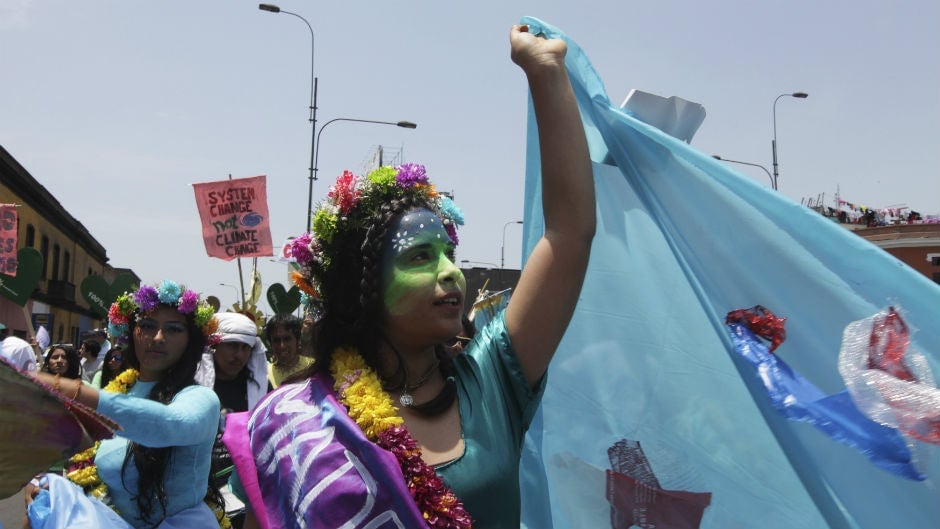Four takeaways from the UN climate deal in Lima
Negotiators entered this month’s United Nations climate conference with optimism after the US and China hashed out a side deal on their climate commitments before the talks. But to many, the deal reached on Dec. 14 in Lima, Peru failed to live up to the hype.


Negotiators entered this month’s United Nations climate conference with optimism after the US and China hashed out a side deal on their climate commitments before the talks. But to many, the deal reached on Dec. 14 in Lima, Peru failed to live up to the hype.
In some ways, the negotiated deal was a breakthrough. For the first time in history, 196 countries agreed to reduce their greenhouse gas emissions, which is crucial to lowering global temperatures. But critics say that without specified targets or the pressure of legal repercussions, reducing countries’ emissions will be hard to enforce.
Here are the main takeaways from the deal, hammered out over two weeks of fraught negotiations in Lima:
Countries pledged to submit emissions plans
All states will submit a plan to curb their emissions by a deadline of Mar. 31, 2015. These commitments, called “Intended Nationally Determined Contributions (INDCs),” will include the planned numerical reduction, and an outline of how the states plan to meet them through domestic policies. This will provide the basis of the comprehensive climate agreement for next year’s conference in Paris.
The hitch? The INDCs are not legally binding, and the countries will not face any official consequences for failing to comply. Instead, the goals will be set and met through peer pressure.
“The text went from weak to weaker to weakest,” said Samantha Smith, the chief of climate policy for the World Wide Fund for Nature.
Some argue that there may be advantages to a more individualized approach to reducing emissions. After all, winning unanimous consent for a global treaty would be far more difficult and time-consuming.
The biggest polluters dithered
Much of the pressure is on the world’s three biggest polluters: China, the US, and India. In a crucial deal last month, the US and China agreed to reduce their carbon pollution. In a joint statement in November, the US announced it would cut emissions by 17% and 26-28% in upcoming years, and China said it would strive to stop its emissions from growing starting in 2030. In Lima, however, the two giants clashed, with China arguing that an initial draft placed too much of the burden to curb emissions on developing countries. India’s commitment remains unclear; So far the country’s leaders have prioritized economic growth over environmental protection.

Rich and poor countries battled it out
Rich and poor countries remained divided on how to cover the costs of mitigating climate change. At a 2010 meeting in Cancun, developed countries committed to raise $100 billion yearly to protect vulnerable populations from the impacts of climate change and help their economies transition to cleaner energy.
In Lima, negotiators punted once again on this issue. Rather than nailing down the timeline to raise and distribute the funds for climate aid, the deal merely reiterated the goal.
Some money went on the table
The main fund for climate aid did receive more money, however. It reached $10.2 billion, surpassing its latest target, with new donations from countries including Australia, Belgium, Colombia, and Peru. In October, the fund’s board set guidelines for how it would allocate the money.